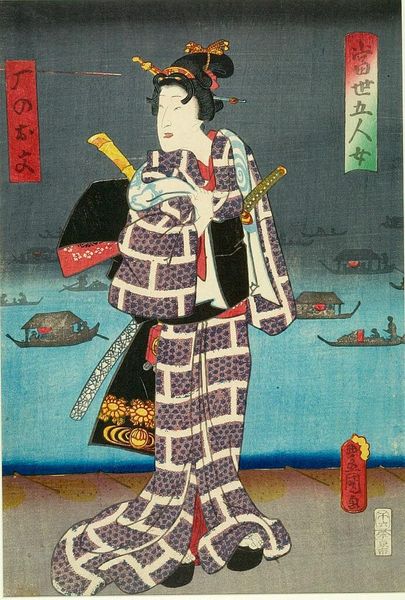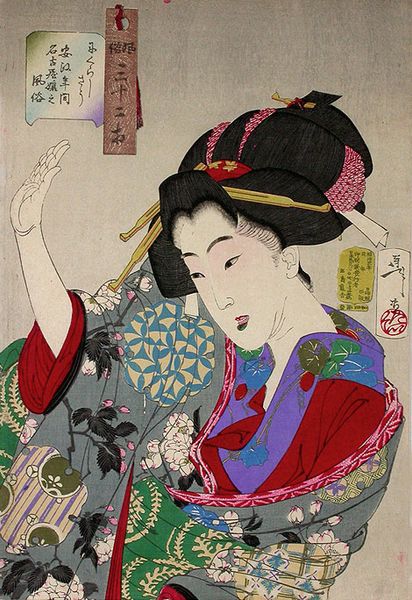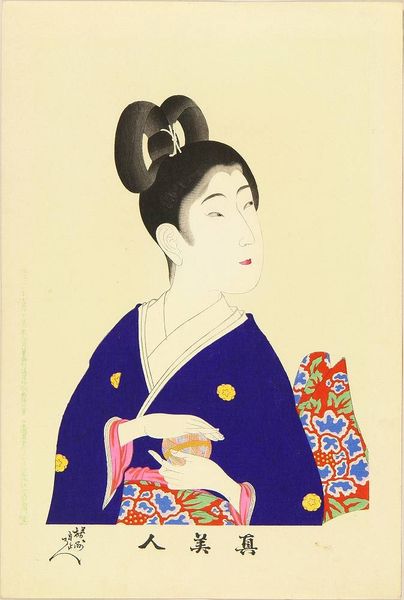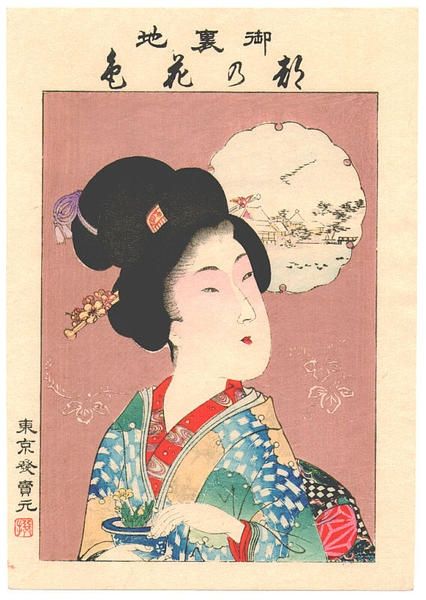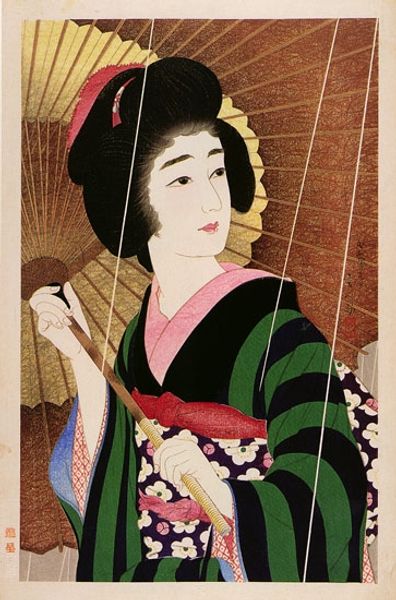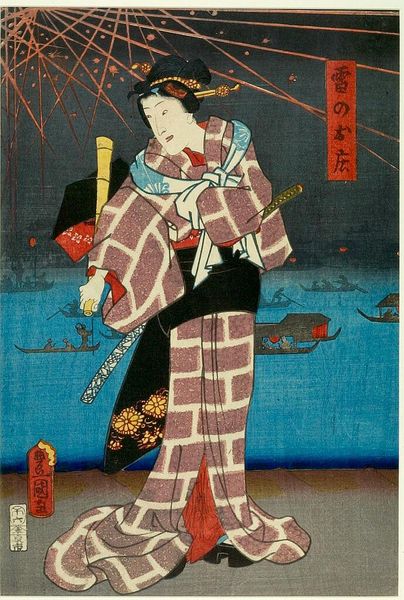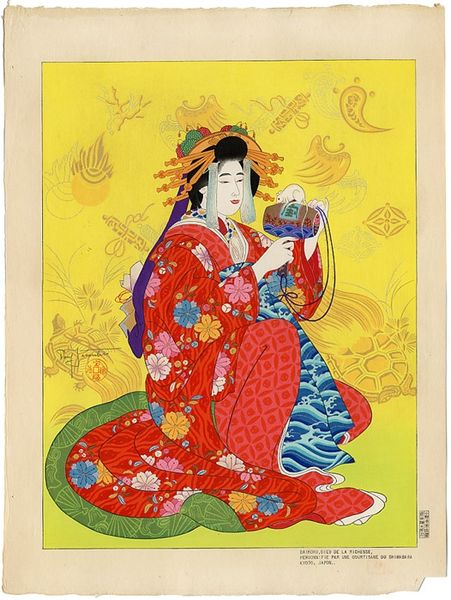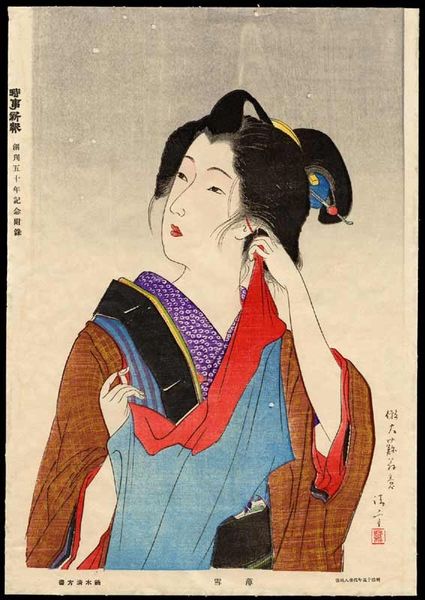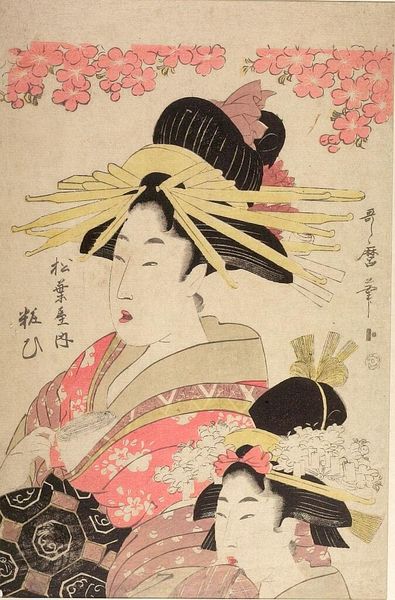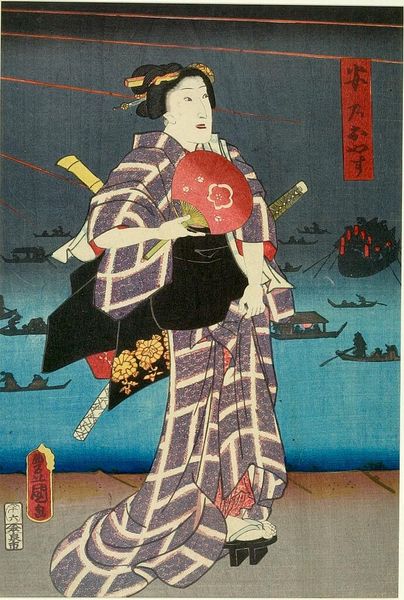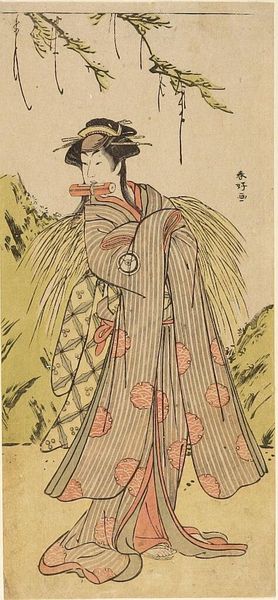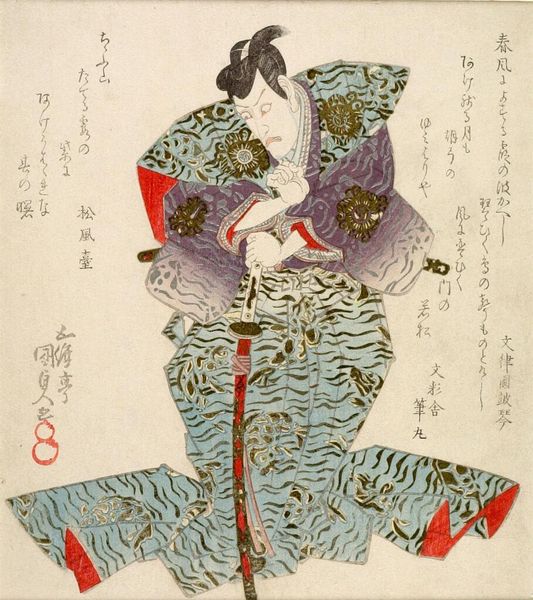
Copyright: Public domain Japan
Curator: Looking at this work, the initial impression is dominated by vibrant reds, and an intricate array of geometric patterns all rendered on what looks like a delicate ground of faded violet. Editor: Yes, it’s a portrait of Nakamura Tomijuro as Kamuro in the Dance of Hane no Kamuro. This print by Natori Shunsen from 1952 is an example of ukiyo-e, or woodblock printmaking. Notice how the patterning, specifically, emphasizes the artifice inherent in this performance. We are meant to see not the person but the crafted persona. Curator: Indeed, the figure is almost entirely consumed by the elaborate costume. The layers of fabric and adornment feel like both a shield and a flamboyant expression, carefully constructed from layers of labor. Woodblock prints require so many different hands and materials – from the artist to the carvers, printers, and paper makers. Editor: Exactly, the bamboo on the fan for instance, is laden with meanings of resilience and flexibility. But the blossoms topping the character’s hair is such a transient image: here today, gone tomorrow. Considering the pose is an expressive, symbolic moment taken directly from the Kabuki play, what cultural stories are being retained and revered, and passed along? Curator: It underscores the commodification of identity inherent within performance, too. The creation and dissemination of these prints allowed for wider engagement with these characters but transformed them into a commodity available for purchase and display. Who was consuming these prints? What was their relationship to the performer and the performance? Editor: The symbols also communicate narratives of gender roles within historical Japanese society. How is this performance of girlhood interpreted and understood differently by varied viewers through time, within changing socio-cultural contexts? How might the symbols signify status, beauty standards, and aspirations for women during that era? Curator: Thinking of those female paper makers or pigment mixers… I can't help but ponder on how many anonymous workers are implicated in the creation of this Kabuki image that purports to display high culture in the mid-twentieth century. Editor: It really highlights how a single image can contain so many intricate threads of meaning. Curator: Absolutely. Thank you.
Comments
No comments
Be the first to comment and join the conversation on the ultimate creative platform.
